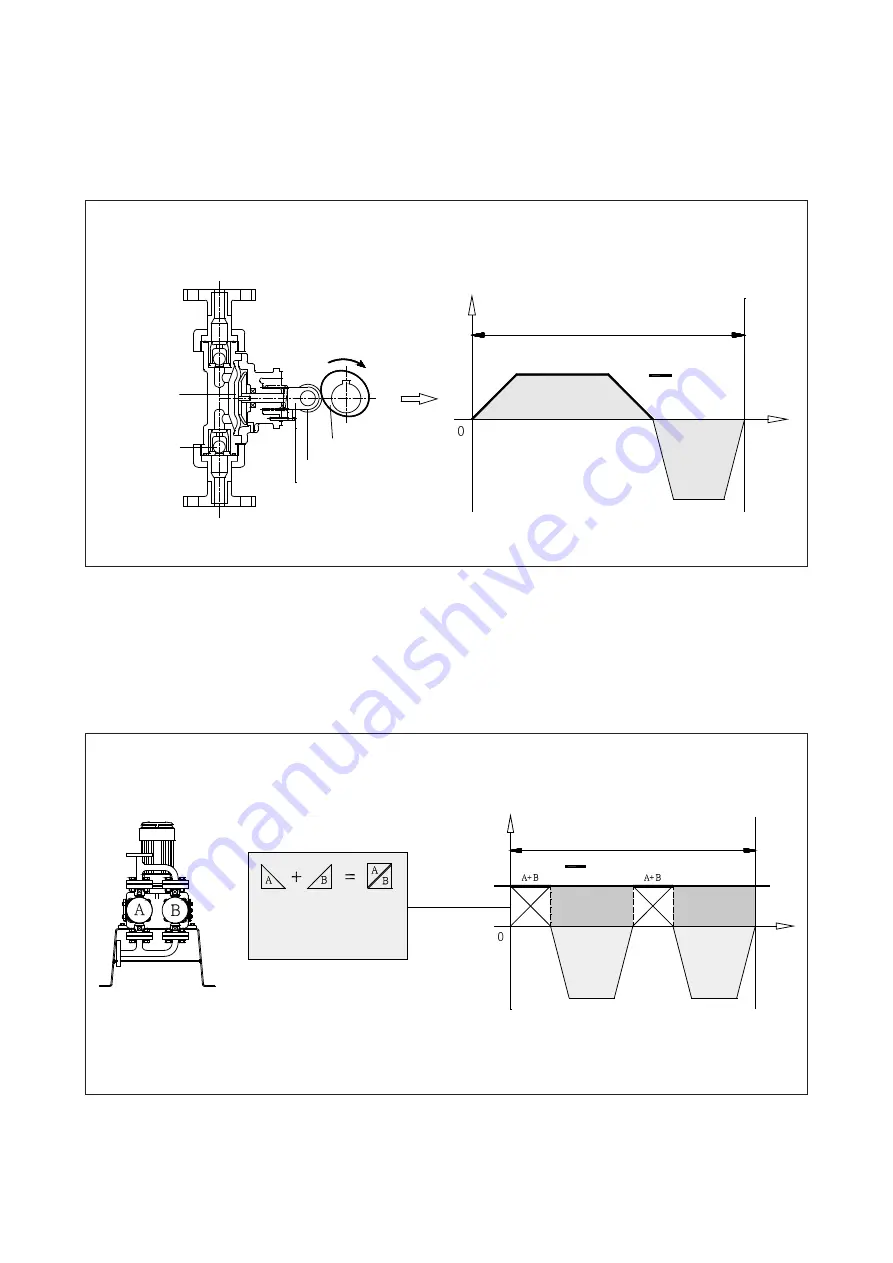
9
<Figure A> shows the pulse wave by a eccentric cam for a general metering pump. The pulse of metering
pumps generates when the eccentric cam is used to convert the power of the motor into reciprocating
motions. This eccentric cam is a circular object with the eccentric amount of e, so the reciprocating velocity of
the diaphragm has sinusoidal wave. This is why the discharge flow rate has pulses.
Fig. B Pulseless metering pump(Single head)
Diaphragm
Check Ball
Slider
Niddle bearing
Velocity cam
Constant velocity wave by a constant velocity cam
1 Rotation
Capacity
discharge
Suction
Instantaneous
Discharge
Fig. B Pulseless metering pump constant velocity wave by a constant velocity cam
<Figure B> shows the pulse wave of a constant velocity cam, having a constant velocity section in the flow
rate. Because the constant velocity cam operates the diaphragm in a constant velocity, the discharge flow
rate is constant, too. The constant flow rate in this section is the pulseless flow rate. However, the
reciprocating metering pump always has a suction section if it has a discharge one, so in order to obtain
constant pulseless flow rate, two wet sides should be used to have constant discharge.
Fig. C Pulseless metering pump(Double head)
Implementation of pulseless line by using
a constant velocity cam and two wet sides
1 Rotation
Capacity
Discharge is constantly
kept because an interial
A and an interial B are
piled up.
A discharge
B discharge
A
Suction
B
Suction
Instantaneous Discharge
Fig. C Pulseless metering pump implementation of pulseless line by using a constant
velocity cam and two wet sides
























